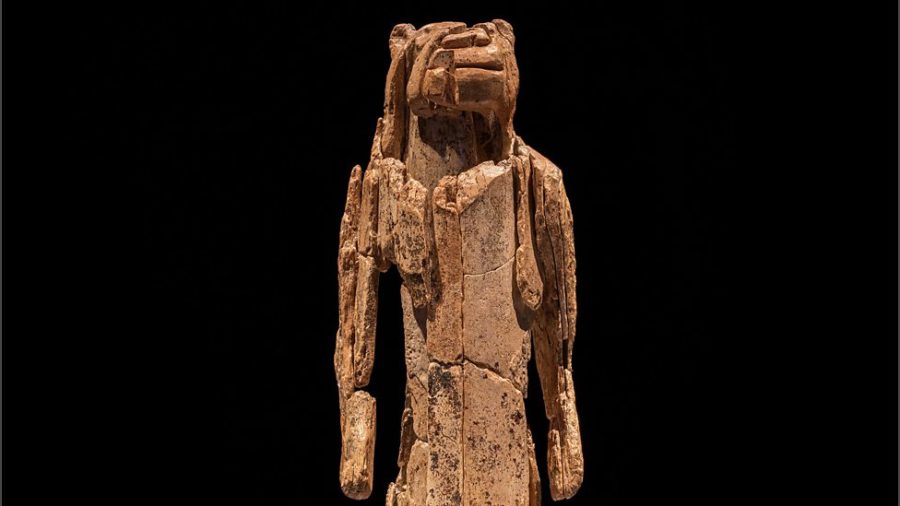27th October 2017 Skopje, North Macedonia
Why carve a lion-man?

In his BBC radio series “living with the gods”, the British historian Neil MacGregor looks back at religious items of the past. His story begins in a cave some 35 to 40 thousand years ago.
In that cave a Stone Age man or woman sits with a woolly mammoth tusk in her hands. Her life and the lives of tribe she belonged to depended on hunting animals, making clothes and gathering berries, roots and leaves. Getting food in such times was a laborious task, in which everyone would have had to take part.
However this person in this particular cave had another job in mind. Her task was to use the stone tools available to turn the tusk into a figure of a person with a lion’s head. This was no easy task. Two people recently tried to recreate the object with the same tools available 35,000 years ago. Just getting the tusk out of the jaw took them ten hours; the basic shaping took around 200 hours and the full recreation of the figure took more than 370 hours.
That’s an enormous amount of time for a stone age person to be unproductive. For them not take part in finding food, water, or creating clothing. So why do it?
The most logical theory is that this figure was attached to some sort of belief system. Perhaps this was a representation of the tribe’s god or spirit – a figure who might protect them from harm or bring them luck. It was clearly something worthy of 370 hours of careful carving.
This story is of historical importance of course, but it also has relevance today. It indicates that religious or spiritual belief has been an important part of human existence since before recorded history. And belief, of one kind or another, is still important to 5.8 billion people today according to one recent demographic survey.
This story also has relevance on this date – the 27th of October – because today is International Religious Freedom Day. It’s a day when people around the world can remind themselves that the freedom to have a religion or belief, and to follow and practice it, is a basic human right. They should also reflect on the fact that this right that is all too often abused.
Sadly too many governments pass blasphemy laws which punish those who practice a minority religion in that country. Too many people around the world suffer persecution, harassment or violent attacks simply because they believe something different from the majority. And authorities in far too many countries routinely restrict religious practices and destroy places of worship or symbols of faith.
While I may not personally hold a religious belief – that’s my right too – I am strongly committed to the upholding the right of anyone to have and be able to practice their own beliefs as long as they don’t encourage or incite violence, hatred or the harming of others.
In October 2016 the British Foreign Office hosted a ground-breaking conference to explore issues of religion and belief. The participants at the conference pointed to an overwhelmingly strong body of evidence showing that inclusive societies, in which people are free to practice their own religion and beliefs, are less prone to extremism. That the restriction of freedom can lead to the use of religion as an excuse for violence. The British Government acts to ensure religious tolerance and freedom in the UK. And it applies diplomatic pressure on those countries which routinely abuse the rights of others in this way.
So whether you adhere to Judaism, Christianity or Islam. Whether it’s Hinduism, Taoism, Buddhism, or Sikhism. Or whether you subscribe to any number of other faiths – or no faith at all. Your right to believe is a basic one and your choice of what to believe is your own. No one has the right to force you to believe something different or restrict the expression of your faith. And as that Stone Age person who carved the lion-man shows, having a belief or faith is a basic human need that has been around for at least 35 thousand years.
Note: a photo of the lion man figure currently held in the Ulm Museum in Germany can be found in the Wikipedia article titled “Lion-Man”.

Greetings! Very useful advice within this post! It is the little changes that make the largest changes.
Many thanks for sharing!